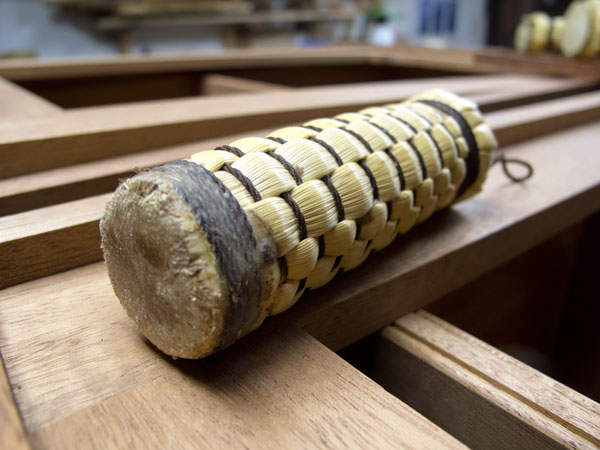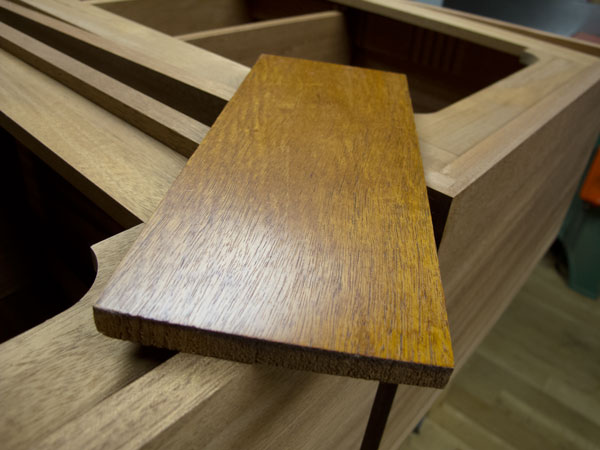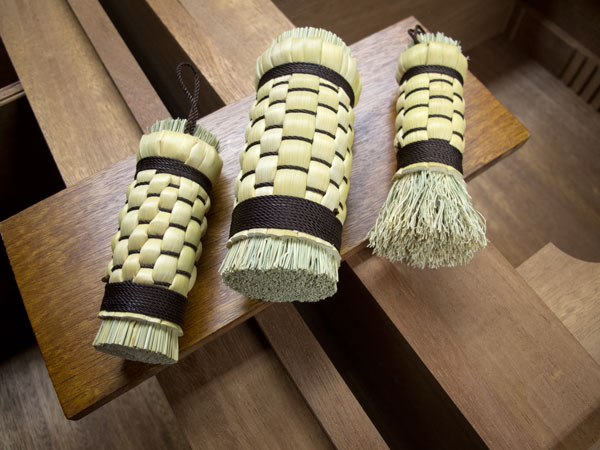We may receive a commission when you use our affiliate links. However, this does not impact our recommendations.
Last weekend during the Lie-Nielsen Hand Tool Event in Charleston, S.C., I completed three try squares and even applied the finish right at the bench using a polissoir (French for “polisher”).
For the attendees who had never seen a polissoir or the surface it leaves behind, it was an eye-opener. Photographs don’t do the surface justice. It’s an experience that is both tactile and visual.
Most people assume that the polissoir is a tool used only to apply a wax finish. While you can do that, my favorite way to use the polissoir is as burnisher, with wax only as a lubricant on the tip. In fact, I have never added any wax to my polissoir since setting it up 18 months ago.
Many attendees also assume that the surface the polissoir creates is temporary and needs to be renewed, like a wax-only finish. This is also not the case. After I set up my polissoir 18 months ago I polished up a piece of mahogany left over from a campaign chest. During the last 18 months, that poor piece of wood has been kicking around the shop. I’ve used it as a clamping pad, planing stop and more.
The surface is still excellent.
And in other polissoir news, there are now three more models to choose from. Don Williams, who rediscovered the tool during his translation of A.-J. Roubo’s “l’Art du menuisier,” has developed different tools for different needs.
You can read all the details (and order one) from Don’s blog here. The photograph below shows the three new models: a 1-1/4″-diameter tool with slightly longer bristles (these allow more sculpting of the tip), a 2″-diameter model (which was the size speced by Roubo) and a model with 1″-long bristles for working carvings.
I’m going to set up the full-size model this week and put that sucker to work.
If you are new to polissoirs, check out this video I shot of Don using one to apply a wax finish here. You can make your own from a broom and hose clamps with the help of this blog entry.
And if you want to see one live in the broomcorn, come to the Lie-Nielsen Hand Tool Event in Cincinnati this weekend (details here). I’ll bring the whole lineup.
— Christopher Schwarz
Here are some supplies and tools we find essential in our everyday work around the shop. We may receive a commission from sales referred by our links; however, we have carefully selected these products for their usefulness and quality.











When you say, “Most people assume that the polissoir is a tool used only to apply a wax finish” I can say I’m certainly among those people. We think this for a reason: the materials that have been posted so far tell us so. For example, the previous post with Don Williams using the polissoir says something about modern people not recognizing the value of wax as a finish by itself. The whole point of that post appears to be an explanation of how to use the polissoir to create a wax finish. You rub the wood with plenty of wax to get started, and you use the polissoir to pushthe wax into the pores, possibly choosing appropriately dyed wax to match the wood (dark wax for dark woods).
It’s not clear to me that if I’m going to put shellac on something that I want to fill the pores with wax first. Is that a good strategy? (It seems like relatively soft wax under comparatively hard shellac would be asking for trouble.) And if I want to use other finishes, wax might interfere with adhesion. So that video didn’t suggest that the polissoir could be used as a general finishing tool. This limited applicability was the main reason I didn’t bother with the tool.
You above that you don’t use wax. Does this mean that you just use the polissoir on bare wood rather than waxing first as shown in the video, and then you follow up with your finish of choice?
What setup is necessary to perform on the new full sized model that you have?
It seems to work much like the french goos quill brush.
Mike
Your reference to Tailhook is offensive. What’s funny about sexual abuse? I expect cleaner humor on the Popular Woodworking site. You can do better.
Mark
How does this surface treatment affect any further finishing stages, such as colouring with aniline dye and/ or shellac? If one uses the polissoir on a carving to “even it out”, does it create any discrepancies in the overall look when a uniform finish is subsequently applied to the entire piece (carved and non-carved surfaces)? Again, I’m thinking dye and shellac mainly.
I got the bigger model from Don about a month ago and I really like it. I don’t have any experience with the original model so I can’t compare really, but the larger diameter better fits in my piano player fingers. I have also used the “carving” model and I would compare it to an eraser that can correct many problems created by a beginning carver. I’m starting to question just how clean vintage carvings are when I see what one of these can do to unify a surface.